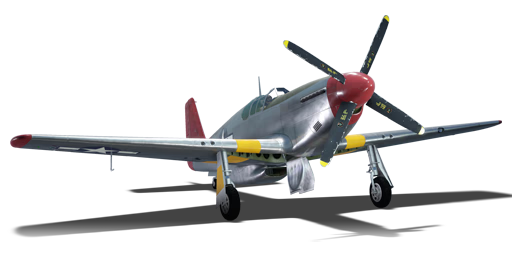



The P-51C and the essentially identical P-51B were the first production P-51 Mustang models equipped with the famous British Rolls-Royce Merlin engine, license-produced in the United States as the Packard V-1650, significantly improving its high-altitude performance with its two-speed two-stage supercharger in conjunction with a new Rotol four-blade propeller. While not quite as famous as the later P-51D series with bubble canopies, these "razorback" Mustangs were produced in large numbers and served Allied forces well. This aircraft is by default painted in the livery of the 332nd Fighter Group, a distinguished all-African-American unit known as the "Red Tails".
Introduced in Update "Raining Fire", the P-51C-10 handles similarly to comparable Merlin-engined Mustangs like the P-51D-5 and P-51D-20-NA and is slightly better than them in some respects. Its main weaknesses lie in its armament: only four wing-mounted M2 Browning machine guns leave something to be desired, though the access to late-war belts helps somewhat with damage output, and the suspended ordnance is nothing special. Overall, it is still a competitive aircraft and offers a good learning opportunity for later USAF propeller fighters.
flaps
flaps
flaps
brake
| Belt | Belt filling | Armor penetration (mm) at a distance: | |||||
|---|---|---|---|---|---|---|---|
| 10 m | 100 m | 500 m | 1000 m | 1500 m | 2000 m | ||
| API-T/AP/AP/I | 30 | 27 | 20 | 13 | 9 | 6 | |
| AP-I/AP-I/API-T/I/I | 28 | 26 | 18 | 11 | 7 | 4 | |
| API-T/I/AP/AP/AP-I/AP-I | 30 | 27 | 20 | 13 | 9 | 6 | |
| API-T | 28 | 26 | 18 | 11 | 7 | 4 | |
| AP-I/I/AP-I/I | 28 | 26 | 18 | 11 | 7 | 4 | |












Flight performance | |
|---|---|
Survivability |
|---|
Weaponry | |
|---|---|